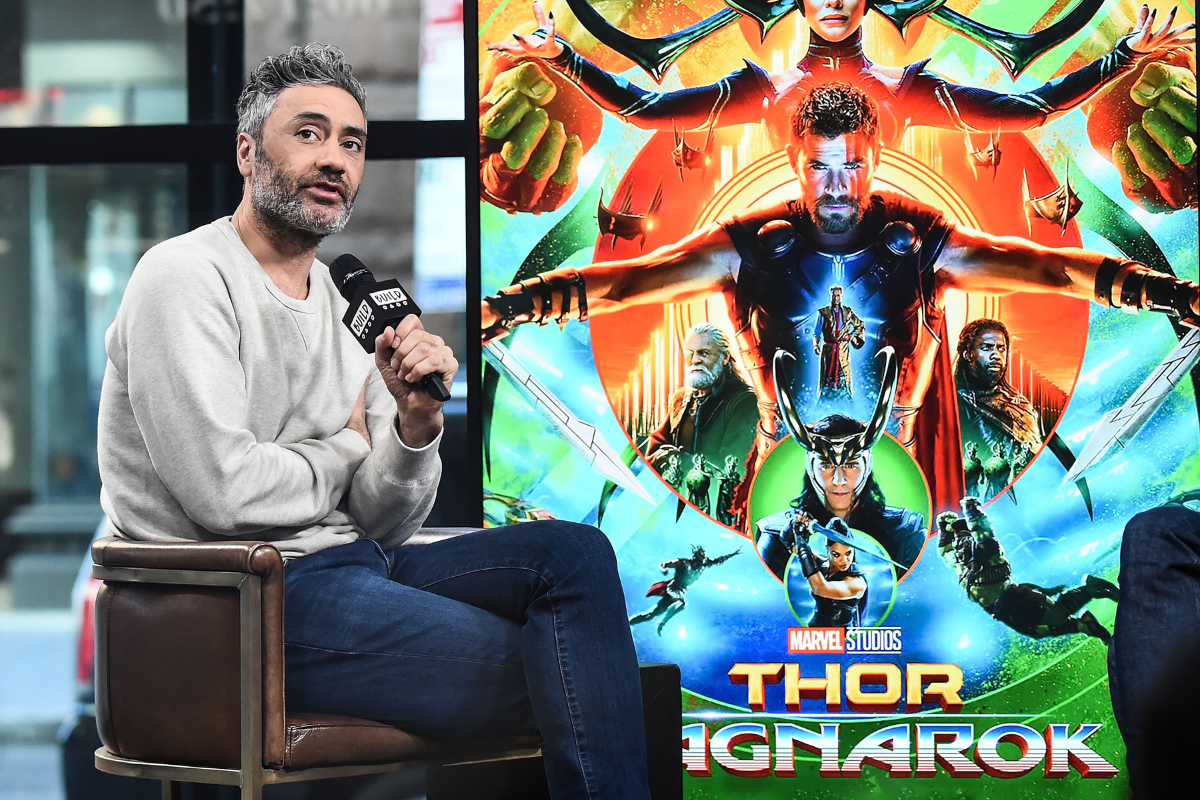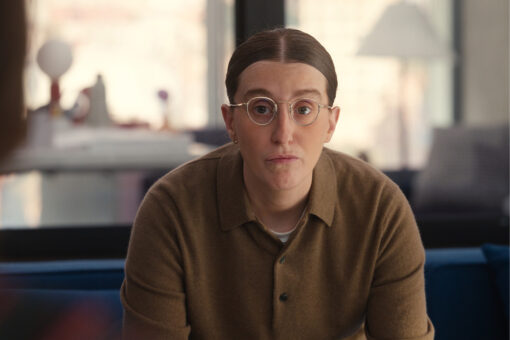I found out about “Thor: Ragnarok” purely by accident, but when I say it changed my life, I’m not exaggerating.
A few weeks after my 17th birthday, I saw an article announcing Marvel Studios had picked a director for the then-untitled “Thor 3”: a New Zealand man named Taika Waititi. He would be the first person of color to direct a Marvel film, which was cool enough on its own. I kept reading and came across this sentence: “Taika Waititi is Asian/Pacific Islander and Jewish.” I immediately thought: That’s so weird. A second or two passed, then – Wait, that’s me!?
As a Chinese kid who was adopted into a white, multifaith American family, I’d never considered I could be Jewish. Jewish was a descriptor for my mom, not me. After all, Jews didn’t look like me! Jews weren’t Asian. So, when I read that sentence saying Taika Waititi was Jewish and Asian/Pacific Islander (he is Māori), it blew my mind. If Taika Waititi was two things, maybe I was too! Was I an Asian Jew? Was my younger sister, who was also adopted from China, an Asian Jew too? I remember staring in shock at my computer, the revelation of my dual identity striking like a thunderbolt. And while I did not yet know the term Jew of Color, as I finished high school and began college, I was comforted by the fact that I knew of two other Jews like me: my sister and Taika Waititi.
I was at the theater opening night three years later to see “Thor 3,” by then titled “Thor: Ragnarok.” The story’s main arc follows titular god of thunder Thor, the hammer-wielding crown prince who returns to find his kingdom of Asgard in chaos as Ragnarok, or the apocalypse, nears. Ragnarok is the foretold destruction of Asgard and is brought on by Thor’s evil older sister Hela. Accompanying Thor in his quest to stop Ragnarok is his younger brother Loki, who was adopted into the Asgardian royal family. Although the plot followed several existing comic storylines, the film resonated with me in a way that I have never experienced before or since. Interpreted through the lens of being Jewish and a person of color, it felt as though Taika Waititi was speaking directly to me through the screen.
First, Waititi’s characterization of Loki differs from subsequent films in that Loki’s adoption becomes normalized in “Thor: Ragnarok.” As an adoptee myself, adoption tropes in the media are often overdone and present a simplistic view of adoption that is neither accurate nor helpful in dispelling stereotypes and misconceptions. Loki is perhaps the most high-profile adoptee character in media today, with five blockbuster movies and his own TV show. While the other films played Loki’s adoption for melodrama or a punchline, in “Thor: Ragnarok,” Loki’s adoption is just one of many facets of who he is — relevant to his identity, but not his entire characterization or a gimmicky plot point. In fact, as the imminent threat of Ragnarok forces the two brothers to work together, Waititi deftly creates scenes between Thor and Loki that would be found in any family, regardless of birth or adoption: inside jokes, bickering, agreeing not to tell Father (even if he is the King of Asgard). It felt wonderful to see an adoptee presented as a full character rather than a stereotype, reforming the portrayals in the earlier “Thor” films.
Second, the main plot of “Thor: Ragnarok” speaks to recognizing and rectifying the legacy of imperialism and colonization, something I hardly expected from a Marvel film. For Jews of Color, the effects of imperialism and colonization are inherent in our history, as is reckoning with a troubled past. Through the course of “Thor: Ragnarok,” it is revealed that the King and Queen of Asgard (Thor and Loki’s parents) once oversaw the conquest of entire planets alongside the villain Hela — even using the hammer Thor eventually inherits. This ugly history was then hidden and almost forgotten — until Hela returns, Ragnarok begins and Thor discovers the palace he and Loki grew up in was built over the graves of soldiers killed building the empire. Later, Thor is shocked as a fresco depicting a peaceful, thriving Asgard crumbles to reveal another mural underneath, this one of the violence and destruction Asgard perpetrated across the galaxy to achieve such prosperity. Ultimately, Thor and Loki are unable to stop Ragnarok, and the physical kingdom of Asgard is destroyed, a stark reminder that a nation that does not acknowledge and rectify the wrongs of its past will find itself haunted by them in the future.
Tied in with this second point is Waititi’s bold and meta move to destroy Thor’s hammer, Mjolnir, within the first half of the movie. Outside of the Marvel Cinematic Universe, Mjolnir and other elements of the Norse Gods have been used by white supremacists and Neo-Nazis, even leading to some symbols being classified as hate signs. Destroying the hammer on screen is a brilliant statement, because it not only removes from the films a symbol frequently used by hate groups, but plot-wise it forces Thor to stand on his own. In order to save his people, Thor must realize his power comes from within, not from a weapon once used to subjugate millions of others across the galaxy.
The third and the most significant element of “Thor: Ragnarok,” is the story of diaspora. Woven in the fight scenes, worldbuilding and one-liners is a tale of found family and preserving a community and culture. As Ragnarok hails the destruction of Asgard, Thor and Loki manage to save their people from the rubble. It is Marvel’s version of “Fiddler on the Roof,” with Asgardian refugees boarding (space)ships bound for a new land as their old world crumbles. Waititi hammers the point home with the soundtrack: “Fiddler” has “Anatevka,” “Thor: Ragnarok” has Led Zeppelin’s “Immigrant Song.” But the quote that stays with me most as a Jew of Color is said by Thor as he prepares to leave his homeland forever: “Asgard’s not a place. It’s a people.” I had never heard any sentence so succinctly summarize the diaspora experience. Both Jews and people of color have for centuries relied on being a people, not a place; finding strength in community and maintaining culture not with national flags or geographic location but by passing traditions down to the next generation.
There’s so much more I could write about this film: the beautiful imagery, Jeff Goldblum’s show-stealing role, a brilliant line where Waititi insinuates the prison system is a form of slavery (yes, he said that in a Marvel movie). But my biggest takeaway from “Thor: Ragnarok” is that sitting in that darkened theater was the first time I felt seen for who I was by someone like me — which is ridiculous, because it’s a film about Norse gods in a comic book universe! But that film changed the course of my life. When I was 22, I finally found Asian Jews who weren’t my sister or Taika Waititi. Since then, I’ve joined a whole community of them (the LUNAR Collective) and am now a Los Angeles community leader! I know I wouldn’t have had the courage or the confidence to put myself out there had I not seen Taika Waititi do it before me with the incomparable “Thor: Ragnarok.”

Late Take is a series on Hey Alma where we revisit Jewish pop culture of the past for no reason, other than the fact that we can’t stop thinking about it?? If you have a pitch for this column, please e-mail submissions@heyalma.com with “Late Take” in the subject line.



